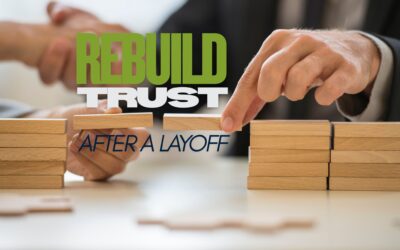It Can Be A Challenging to Lead
“Disrupt HR” has become an interesting platform for human resource professionals who have a seat at the table with the C-Suite. Contributors with a proper mindset freely share information to energize, inform and empower people to provide solutions. They are asking the question – What’s it going to take to climb out of this economic disruption that is impacting companies around the globe? Surprisingly, productivity while working from home and blending of professional responsibilities is working better than many realized. HR as well as their C-Suite members have shown care for the lives of their employees and at the same time cut back on non-essentials. Innovation leaders have led the way by looking at past business processes and what is going on in the market and processing information to further highlight some organizational flaws and leadership shortcomings. Disrupt HR seems to be producing good results. Keys to moving organizations forward is collecting and interpreting incomplete data as it moves the organization out of the hole they have found themselves in. Asking questions that help organizations understand that it may be harder to climb out of the crater if we don’t address some deeper issues. The ultimate result rests in what is best for the employees and their employer.
Action steps to begin climbing out of this ever-deepening crater and move toward economic recovery:
-
- Develop a Leadership Livelihood Mentality – This mindset involves both defensive and offensive posturing. Leadership must develop a forward-thinking approach that maneuvers and adapts. Most companies have experienced growth in the past few years. It may be time to cut some of the things we have grown so fond of including people, capital and initiatives. Give careful thought to the talent that has brought you to your successes as it may have a negative impact over time and may prove ineffective but should be considered carefully as a defensive measure. As a livelihood mentality leader, embracing an offensive strategy means asking how to get the demand back for our business with innovative growth opportunities. Ditch the old initiatives that don’t make a positive impact. Look at ways to deepen your strategic relationships with new ideas. Make it common to think outside the box that produce results.
- Practice offensive maneuvers – Include variation, labor expansion, behavior changes and acquisitions or partnerships for growth. A more aggressive and expansive offensive strategy is required to take our businesses off life support:
-
- Industry Variance – Some industries are thriving from the virtual delivery of their services versus those who primarily deliver their value in physical proximity as they may continue to struggle. For example: conferences, events, retail centers, and higher education are seeing significant changes and forced to adapt. Social distancing will dramatically cut into their ability to accommodate and the experience will be far different than in the past. Some industries such as tech organizations, consumer products including recreation, yard additions, agriculture, and health skill-sets are thriving as well as those who exhibit real innovation and are benefiting from the opportunities this crater has created.
- Labor Expansion– Beyond a strong financial balance sheet to maneuver into net-new growth territories, an organization’s ability to re-skill, up-skill, and redeploy talent based on specific industry/client demands will be critical. Talent development’s new role will be to quickly, efficiently, and remotely assess the current labor pool, align talent to the renewed values agenda, and inject the organization with much needed fresh approaches to on-the- job skills development, knowledge transfer and personal development opportunities.
- Behavior Changes – We won’t need office managers if no one is going into the office. A restaurant doesn’t need servers and bus staff if people are not dinning in. Train office managers to become project or process leaders, and the staff to become logistics, operations, and delivery experts to assemble, package, ship, and deliver products or services. Retailers need e-commerce efficiencies, and attorneys need to pivot to intellectual property, bankruptcies, or M&A.
- Acquisitions or Partnerships – Many businesses with weaker liquidity could benefit from strategic relationships, investments, and acquisitions by stronger competitors. Weaker companies may not be actively seeking a buyer, but now is the right time for astute leaders to reach out to similar or supportive businesses in their industry and explore opportunities.
-
- Entrepreneurial Thinking – Large enterprises are skilled at managing budgets. Entrepreneurs skilled at deploying capital. Speed and agility matter more than ever, and enterprises must quickly move from survival mode to “How are we going to win?”. Leaders encourage, recognize, and reward creativity and resourcefulness – that’s how innovation happens. Become hyper-focused on core capabilities. Ruthless focus can generate extraordinary results challenging the status quo versus protecting the status quo. Imagining a profoundly better and different future is what great entrepreneurs do. That’s the entrepreneurial thinking so desperately needed in business today. Seeing setbacks is an opportunity to rethink, re-imagine, even reinvent key segments of business. Lead by exploring future possibilities including product development, creating new services and business models, discovering innovations that can improve your company’s operations and expansion into adjacent businesses. This is the road to the win column.
True innovation leadership mindset, an aggressive offensive strategy, and entrepreneurial thinking alone won’t save all organizations. We must quit blaming external factors as an excuse. It takes courage to survive during the tough times.




